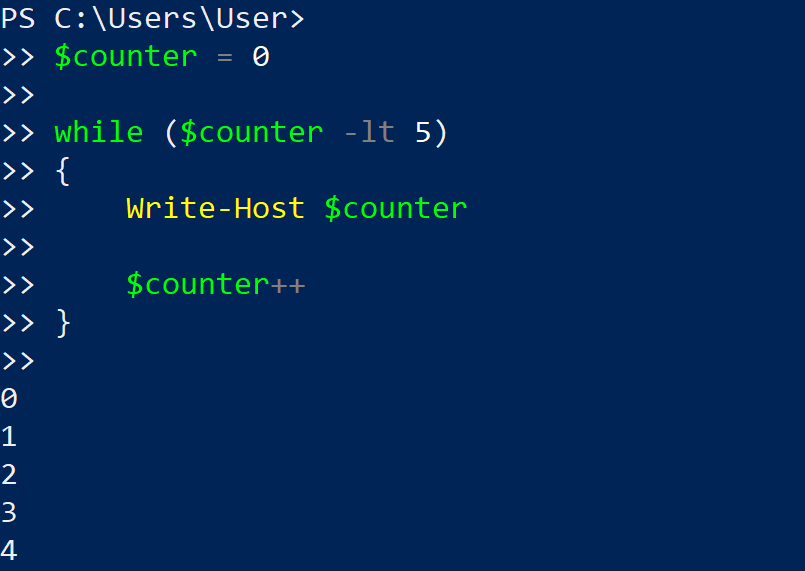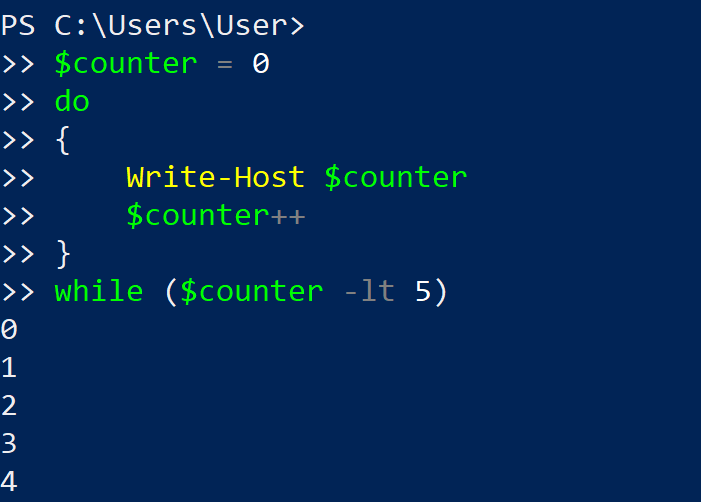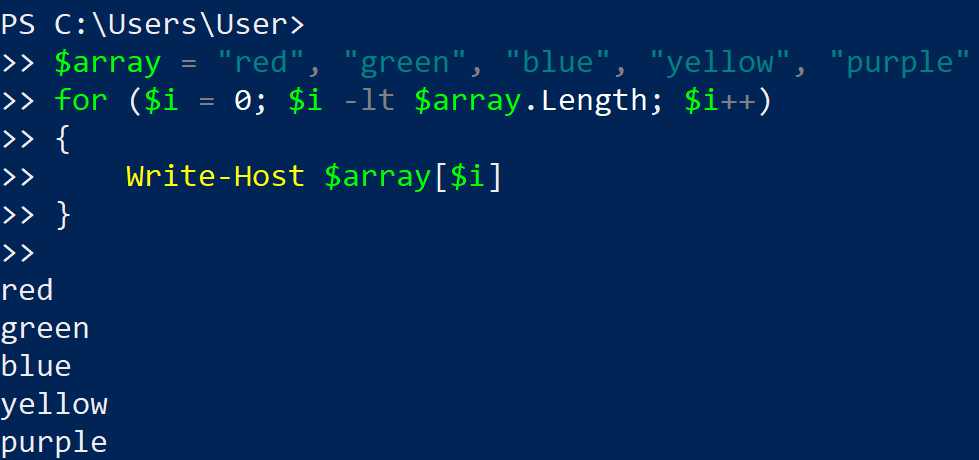PowerShell is a powerful scripting language and shell framework that allows administrators to automate tasks and manage configurations.
One of the essential components of working with PowerShell is the ability to loop through arrays, which enables you to perform actions on each element, such as filtering, sorting, or other manipulations.
To loop through an array in PowerShell, you can use the ‘for’ loop, the ‘foreach’ loop, or the ForEach-Object cmdlet. These loops enable you to iterate through an array and specify actions to be performed on each item based on its index. Each loop structure offers unique benefits depending on the use case.

In this article, we’ll break down the syntax and structure of each method, provide practical examples, and highlight key differences to help you understand when and how to use each loop type effectively.
Whether you’re a beginner just getting started with PowerShell or a seasoned user looking to refine your skills, this guide will arm you with the knowledge to navigate array iteration in PowerShell with ease.
Let’s dive in!
Understanding PowerShell Arrays
Before we dive into writing code, let’s quickly review the basics of PowerShell arrays.
PowerShell arrays are versatile data structures used in scripts for storing, manipulating, and iterating over a collection of items.
Arrays can hold single or multiple data types, and can be used with various looping constructs in PowerShell like for, foreach, while, and do-while to perform operations on individual items.

Types of Arrays
PowerShell provides several types of arrays:
- Scalar arrays: Scalar arrays contain a single data type, such as integers, strings, or custom objects.
- Mixed arrays: Mixed arrays hold multiple data types, allowing for greater flexibility in data storage.
- ArrayList: A PowerShell ArrayList is a .NET collection class that is resizable and offers better performance compared to the traditional PowerShell array, especially when adding or removing array elements dynamically.
Creating and Initializing Arrays
To create and initialize an array in PowerShell, you can use the @() syntax.
For example, to create an empty array:
$data = @()You can also create an array and add elements to it simultaneously:
$values = @(1, 2, 3, 4)To create an ArrayList, use the System.Collections.ArrayList .NET class:
$arrayList = New-Object System.Collections.ArrayListMultidimensional Arrays
Multidimensional arrays are arrays within arrays, also known as nested arrays. You can create a two-dimensional array in PowerShell like this:
$matrix = @( @(1, 2, 3), @(4, 5, 6), @(7, 8, 9) )In this example, $matrix is a two-dimensional array containing three arrays.
PowerShell Looping Structures for Arrays
PowerShell provides a variety of looping structures that enable you to iterate through data and perform multiple operations with ease.
In this section, we’ll explore four common types of PowerShell loops: ‘for’ loop, ‘foreach’ loop, ‘while’ loop, and ‘do-while’ loop.

1. Looping Through PowerShell Array With ‘For’ Loop
A for loop in PowerShell enables you to iterate through a sequence of elements, such as an array or a range of numbers.
The loop consists of an initializer, a condition, and an iterator.
The syntax for a for loop is:
for ($i=0; $i -lt $Array.Length; $i++) {
# Commands to execute for each item in the array
$Array[$i]
}An example of for loop is given below:
# Define an array
$array = 1,2,3,4,5
# Initialize the loop
for ($i = 0; $i -lt $array.Length; $i++)
{
# Output the current item
Write-Host $array[$i]
}This PowerShell script block uses a For loop to iterate over an array of numbers (1 to 5), with each iteration printing the current number. The loop runs as long as the counter variable $i is less than the length of the array.
The output of the above example will be:

2. Looping Through PowerShell Array With ‘Foreach’ Loop
The foreach Loop in PowerShell allows you to iterate through a collection of items (such as an array) and perform actions on each item. The loop automatically retrieves each item and assigns it to a temporary variable.
The syntax for foreach loop is given below:
foreach ($item in $Collection) {
# Commands to execute for each item in the collection
$item
}
An example of foreach loop is given below:
# Define an array
$array = "apple", "banana", "cherry", "date", "elderberry"
# Iterate through each item in the array
foreach ($item in $array)
{
# Output the current item
Write-Host $item
}In the above PowerShell scripts, a string array $array is defined with five elements, each with a different fruit name. The foreach loop works by iterating over each element in the array, assigning it temporarily to the variable $item, and using Write-Host to print each fruit’s name.
The output will have the array values printed line by line:

3. Looping Through PowerShell Array With ‘While’ Loop
A while loop in PowerShell executes a block of commands as long as a specified condition is true.
The loop checks the initial value condition before each iteration.
Here’s the syntax:
$i = 0
while ($i -lt $Collection.Length) {
# Commands to execute while the condition is true
$Collection[$i]
$i++
}An example of a while loop is given below:
# Initialize counter
$counter = 0
# While loop that continues as long as counter is less than 5
while ($counter -lt 5)
{
# Output the current counter value
Write-Host $counter
# Increase the counter
$counter++
}This code block uses a while loop to repeatedly print the value of a counter variable, incrementing it each time, until the counter reaches 5. The loop checks the condition ($counter -lt 5) before each iteration and stops when it’s no longer true.
The output will be:

4. Looping Through PowerShell Array With ‘Do-While’ Loop
The do-while loop in PowerShell is similar to the while loop but checks the condition after executing the loop’s block of commands.
This guarantees that the loop will always run at least once.
Here’s the syntax of a do-while loop:
$i = 0
do {
# Commands to execute
$Collection[$i]
$i++
} while ($i -lt $Collection.Length)
An example of a do-while loop is given below:
# Initialize counter
$counter = 0
# Do-While loop that continues as long as counter is less than 5
do
{
# Output the current counter value
Write-Host $counter
# Increase the counter
$counter++
}
while ($counter -lt 5)This PowerShell script uses a do-while loop to print and increment a counter variable at least once, and then continues doing so while the counter is less than 5. The loop checks the condition after executing the block, ensuring at least one execution of the loop’s commands.
The output is:

Common Array Looping Operations in PowerShell
In PowerShell, arrays are a convenient and powerful way to handle collections of elements. Array operations are essential for various tasks, including accessing elements, filtering, and combining arrays.
In this section, we’ll focus on common array operations in PowerShell, featuring a few examples to illustrate their usage.

1. Accessing Array Elements Using Loops
In PowerShell, array elements are accessed using their index, starting with 0.
You can use brackets [] to indicate the desired index.
For example:
# Define an array
$array = "red", "green", "blue", "yellow", "purple"
# Initialize the loop
for ($i = 0; $i -lt $array.Length; $i++)
{
# Output the current item using its index
Write-Host $array[$i]
}In this script, an array $array is defined with five elements. The for loop then iterates over each index in the array (from 0 to the length of the array minus 1).
Within the loop, $array[$i] is used to access the array element at the current index, and Write-Host is used to print that element.
The output will be:

2. Filtering Arrays With Loops
PowerShell allows you to filter arrays based on specific criteria using the Where-Object cmdlet or its alias, ?.
The following example filters an array for even numbers:
# Define an array of numbers
$array = 1..10
# Filter the array for even numbers
$evenNumbers = $array | Where-Object {$_ % 2 -eq 0}
# Print the even numbers
foreach ($number in $evenNumbers)
{
Write-Host $number
}This PowerShell script creates an array with numbers from 1 to 10, filters the array to keep only even numbers using the Where-Object cmdlet, and stores these in $evenNumbers. Then, it uses a foreach loop to print each of these even numbers.
To learn more about PowerShell cmdlets, check the following video out:
Final Thoughts
Understanding how to loop through arrays in PowerShell is important for anyone looking to master scripting and automation tasks. When you learn to effectively navigate arrays using loops, you’re unlocking a fundamental programming concept that’s universally applicable, not just in PowerShell, but in many other languages as well.
This skill allows you to handle large amounts of data efficiently and perform repetitive tasks with ease. With PowerShell loops, you can iterate over files in a directory, values in a registry key, or lines in a text file, to name a few.
Frequently Asked Questions
How can I iterate over an array of objects in PowerShell?
Iterating over an array of objects in PowerShell can be done using the foreach statement or the ForEach-Object cmdlet. For example:
$array = @(1, 2, 3, 4)
foreach ($item in $array) {
# Perform operations with $item
}
What is the difference between ‘foreach’ and ‘ForEach-Object’ in PowerShell?
foreach is a language keyword used for iterating over a collection, whereas ForEach-Object is a cmdlet that can be used in conjunction with the pipeline for processing collections. The foreach statement generally provides better performance, but a ForEach-Object loop is useful for working with the pipeline:
$array | ForEach-Object {
# Perform operations with $_
}
How to loop through an array of strings in PowerShell?
Looping through an array of strings is similar to iterating over any other array. You can use either the foreach statement or the ForEach-Object cmdlet as shown in the previous examples.
What are the ways to use a ‘for’ loop with arrays in PowerShell?
A for loop can be used with arrays in PowerShell by specifying a counter variable and incrementing it until the array length is reached:
$array = @(1, 2, 3, 4)
for ($i = 0; $i -lt $array.Count; $i++) {
# Perform operations with $array[$i]
}
How can I loop through multiple arrays simultaneously in PowerShell?
To loop through multiple arrays simultaneously, you can use a for loop and access elements from each array using their respective index:
$array1 = @(1, 2, 3)
$array2 = @("a", "b", "c")
for ($i = 0; $i -lt $array1.Count; $i++) {
# Perform operations with $array1[$i] and $array2[$i]
}















